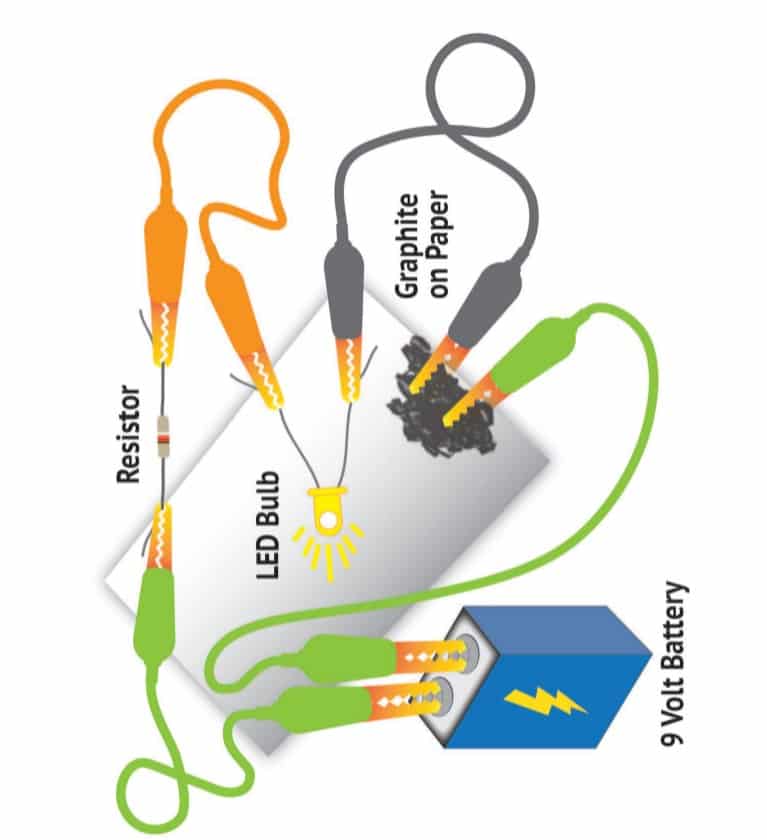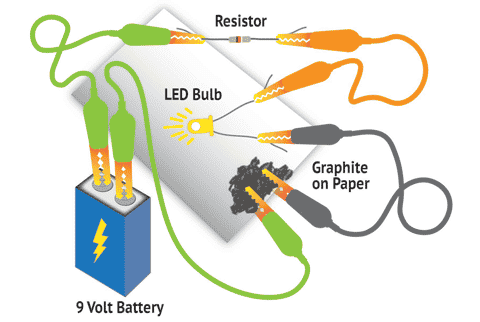Overview
Materials
Per Team of 3-4 Students:
- Soft graphite pencils (#2)
- Paper
- LED light
- 330 ohm resistor (to prevent the LED light from burning out)
- Insulated connectors
- 9 volt battery
- Insulating gloves to wear while handling connector clips
- Projected image or printed copies of the circuit diagram
Instructions
Teams build a simple working circuit and discover whether graphene conducts or insulates electric current.
Important safety points:
- An adult must lead and supervise throughout the activity.
- Students must not try to run electric current through a pencil—it could catch fire.
- Students should wear insulating gloves when handling the connector clips and should attach the battery last.
- Pass out materials to each team.
- Instruct teams to build a simple working circuit using an LED light, a battery, and a resistor. Explain that the flow of electricity is from the high potential (+) terminal of the battery through the bulb (lighting it up), and back to the negative (-) terminal, in a continual flow.
- Once the students have their first circuit working, instruct them to take their paper and rub a lot of pencil graphite into an area of it that is big enough to attach the connector clips to.
- Have teams refer to the diagram and redesign their circuit so that the current now goes through the paper they have rubbed the pencil onto.
Printables

Guiding questions
-
When the paper with pencil on it is added to the circuit, does the electricity still travel around the circuit? In other words, does the graphene complete the circuit?
-
Is graphene a conductor or an insulator?
-
If you attach the connector clips to a part of the paper with no pencil rubbed on it, does the electricity still travel around the circuit?
-
What other materials could you use to complete the circuit?
Engineering & science connections
- A circuit is a configuration of electrically connected components that an electric current can follow. Insulators are materials that are poor conductors of electricity. Conductors are materials that readily allow electricity to move through them.
- Graphene is simply one atomic layer of graphite, the same mineral used in pencil lead. Graphene, first isolated in 2010, is far better than silicon at conducting electricity and is stronger than diamond. And at just one atom thick, it is so thin that it is essentially two-dimensional.
- The two engineers who first isolated graphene received the Nobel Prize in physics for their groundbreaking experiments.
- Graphene is of special interest to engineers because it has so many amazing properties: it’s strong, flexible, transparent, ultra-light, and conducts electricity. Graphene may improve products or allow them to be made thinner, stronger, and smaller. It’s being used in cell phones, transistors, LED lights, camera sensors, solar cells, and touch screens for computing devices.
This activity developed by IEEE.
For more on graphene, visit www.tryengineering.org/lessons/graphene.pdf.


0 Comments